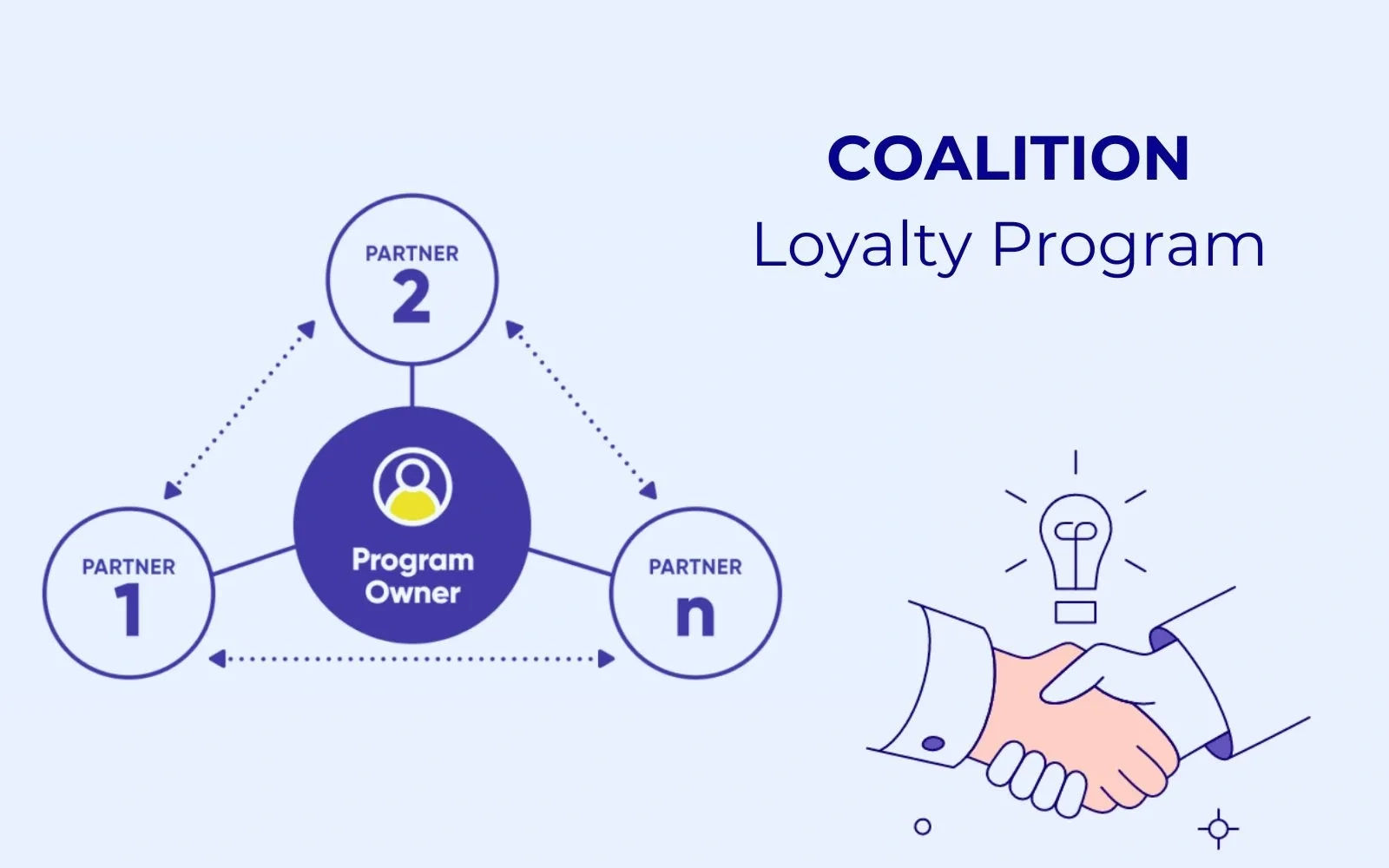What is a Loyalty Program? Everything You Need to Know
A loyalty program is a marketing strategy encouraging customers to continue doing business with a brand by offering points, discounts, exclusive perks, and special offers.

Ever wondered why every brand out there seems to have a loyalty program these days? From coffee shops offering free drinks to apps rewarding your purchases, loyalty programs are everywhere! But how do they work, and why do customers (like you) love them so much? In this post, we’ll break it down in simple terms and show you why these programs are not just marketing tricks—they’re the ultimate win-win for everyone.
Ready to dive in?
What is a Loyalty Program?
A loyalty program is a marketing strategy designed to encourage customers to continue doing business with a brand by offering rewards and incentives. These rewards can include points, discounts, exclusive perks, or special offers based on customer’s purchases or interactions.
Loyalty programs can take various forms, including point-based systems, tiered memberships, cashbacks, or gamified experiences.
Some well-known creative loyalty programs include:
- Starbucks Rewards: Free drinks, exclusive offers, and even birthday surprises.
- Costco Membership: Exclusive discounts and perks for paying annual members.
- Amazon Prime: Unlimited fast delivery, streaming services, and exclusive deals.
- Square Loyalty Program: A customizable option for small businesses, offering flexibility in how customers earn and redeem rewards.
Key Benefits and Importance of Loyalty Programs
This strategy is more than just a marketing trend—the benefits of loyalty programs can be game-changers for both businesses and customers
For Businesses
- Reduced Customer Churn: A well-designed customer loyalty program keeps customers coming back. Studies show that retaining a customer costs five times less than acquiring a new one!
- Increased Revenue: Repeat customers spend 67% more than new ones, so a good loyalty rewards program can turn casual shoppers into loyal brand advocates.
- Gathered Valuable Data: 73% of consumers prefer to do business with brands that use personal information to make their shopping experiences more relevant. The loyalty programs provide valuable insights into customer preferences, enabling personalized marketing and targeted offers.
- Stronger Brand Advocacy: Consumers say customer service influences their loyalty to a brand. Happy, loyal customers become brand advocates, generating positive word-of-mouth marketing and driving organic growth.
For Customers
- Exclusive Rewards & Discounts: Customers appreciate tangible benefits. 66% of consumers modify their spending habits to maximize loyalty rewards.
- Personalized Experience: 80% of consumers are more likely to do business with a company that offers personalized experiences. The loyalty program can create different offers and recommendations tailored to customer needs.
- Community Building: Creating a sense of belonging fosters deeper customer relationships. Loyalty programs can facilitate a community around your brand, increasing engagement and driving conversion rates.
- Added Value: Who doesn’t love free perks? Whether it’s points for purchases or exclusive discounts, loyalty programs deliver tangible benefits.
- A Sense of Exclusivity: Programs like Amazon Prime and Starbucks Rewards make members feel like VIPs with early access to deals or special promotions.
Types of Loyalty Programs
Loyalty programs come in all shapes and sizes, each tailored to fit different business goals and customer needs. Here’s a quick rundown of the most popular types:
| Program Type | How it Works | Rewards |
| Points-Based | Earn points through purchases or interactions (signing up, referrals, and reviews). | Discounts, free products, perks |
| Tiered | Progress through levels like Silver, Gold, and Platinum. | Increasingly exclusive benefits at each tier |
| Paid/ Subscription | Pay a fee for exclusive benefits. | Exclusive access, premium services |
| Punch Card | Earn rewards after a set number of purchases. | Reward after set purchases |
| Coalition/ Partner | Multiple brands collaborate to offer a rewards program. | Reward from various brands |
| Hybrid/ Gamified | Mixed multiple models and gamification. | Varied and engaging rewards |
Each program type has its own strengths and weaknesses, so access our article about different Types of Loyalty Programs to find the right fit for your brand.
How to Implement and Manage a Loyalty Program
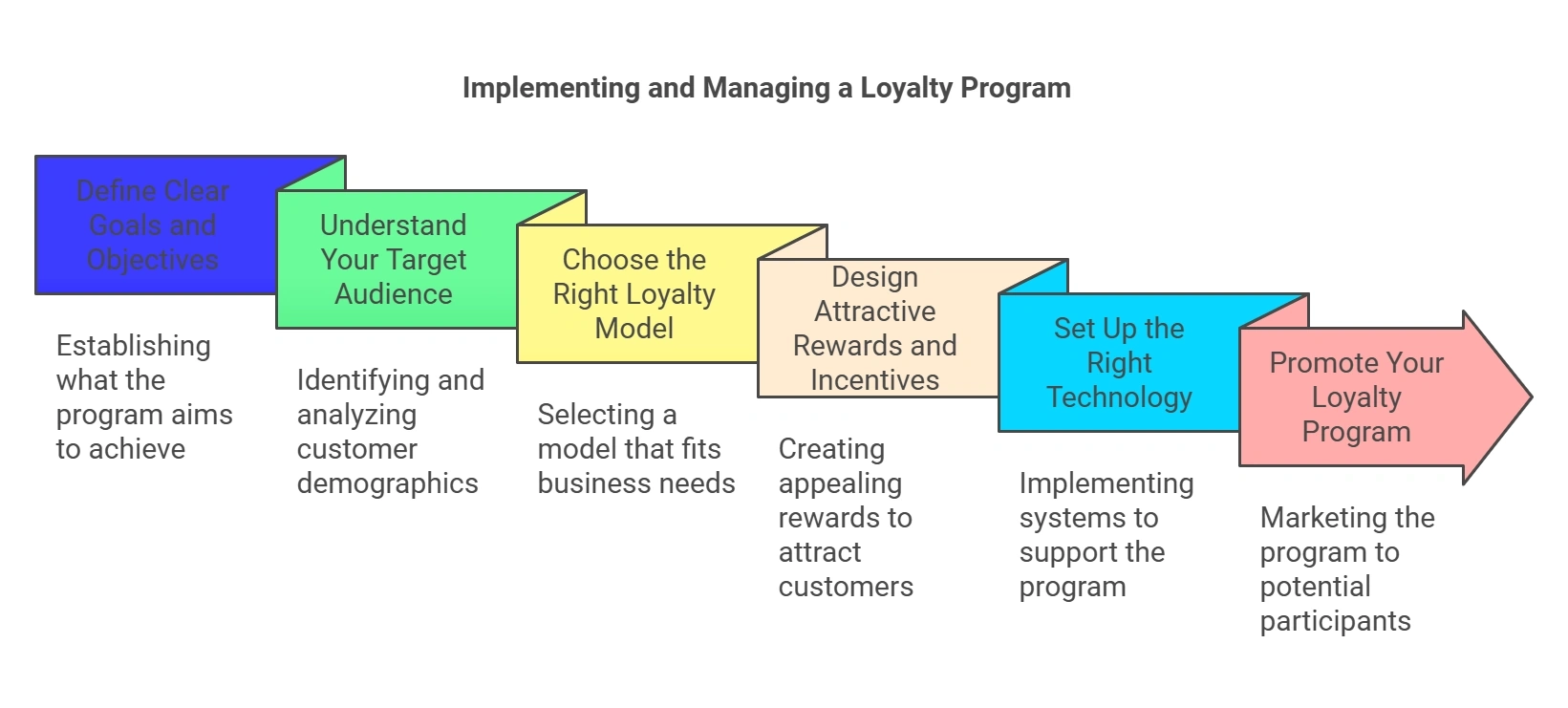
Image: Implementation and management of a loyalty program includes seven steps
Building a loyalty program doesn’t have to be complicated! By following a structured approach, you can design, launch, and manage a program that truly resonates with your customers.
Step 1: Define Clear Goals and Objectives
- Determine what you want to achieve (e.g., increase customer retention, boost sales, or enhance engagement).
- Set specific, measurable, achievable, relevant, and time-bound (SMART) goals
Example: A Shopify merchant looking to boost repeat purchases might focus on a points-based program that rewards frequent buyers.
Step 2: Understand Your Target Audience
- Research customer preferences to discover what motivates them. Who are your most loyal customers? What are their needs & preferences?
- Conduct surveys, analyze purchase history, and gather feedback to understand customers.
Pro Tip: Use tools like Okendo or Klaviyo to collect customer insights and tailor offers to different groups.
Step 3: Choose the Right Loyalty Model
- Consider your goals, customer preferences, and resources.
- Select a program type that aligns with your brand and target audience (For example: Points-based, tiered, paid, punch card, coalition, and hybrid).
Step 4: Design your Program
- Choose a catchy and memorable name that reflects your brand.
- Define earning and redemption rules, reward tiers, and program benefits.
- Offer rewards that excite your customers, such as:
- Discounts, free products, or early access to sales.
- Exclusive experiences like VIP events or personalized recommendations.
- Add gamification elements (e.g., milestones, challenges) for extra engagement.
Watch out: Joy Loyalty program provides the Loyalty page feature to educate customers about your loyalty program and encourage participation. It features a customizable Hero Banner to showcase your brand and loyalty message, a “How It Works” Block with a simple three-step guide (Join, Earn, Spend), and detailed “Ways to Earn” and “Ways to Redeem” blocks that outline how customers can accumulate and use points for rewards.
Step 5: Set Up the Right Technology
- Use loyalty apps on Shopify like Smile.io, Joy Loyalty, or Okendo to manage and track your program.
- Integrate your loyalty program with your CRM or email marketing tools for seamless communication.
Step 6: Promote Your Loyalty Program
- Use multiple channels to spread the word:
- Add banners on your website and product pages.
- Announce via email campaigns and social media posts.
- Encourage customers to sign up with exclusive launch offers.
Step 7: Monitor, Evaluate, and Improve
- Regularly track key metrics like customer retention rates, redemption rates, and ROI.
- Gather customer feedback to improve rewards and program features.
- Stay flexible—update your program as customer needs and trends evolve.
To see a detailed guide for implementing and managing the loyalty program, click …. Article.
Measuring the Success of a Loyalty Program
A successful loyalty program requires more than good intentions—it needs measurable outcomes. To evaluate its success, track key metrics like customer retention rate, repeat purchase rate, and customer lifetime value (CLV) to measure engagement and financial impact. Additionally, enrollment and participation rates should be monitored to understand customer interest, while redemption rates reveal how appealing the rewards are.
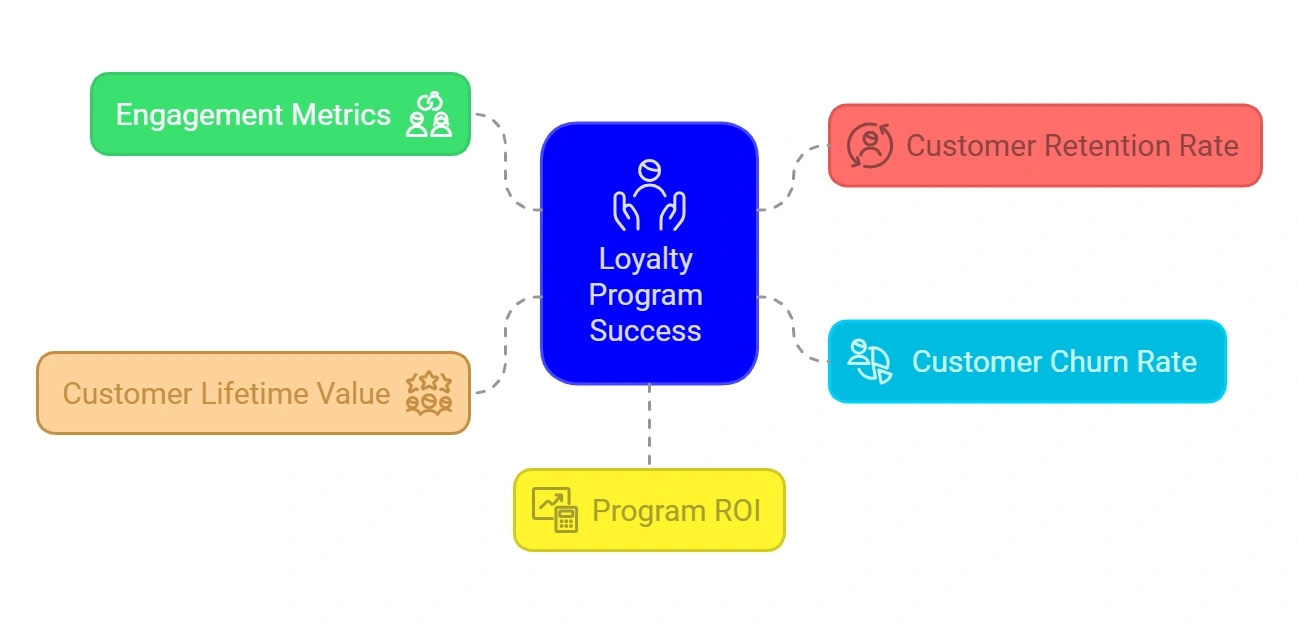
Moreover, assess incremental revenue to determine the program’s effect on sales and keep an eye on cost per member to ensure a positive return on investment (ROI). Use tools like Net Promoter Score (NPS) and collect customer feedback to gauge satisfaction and loyalty. Finally, monitor churn rate to spot areas that need improvement and ensure ongoing engagement. By consistently analyzing these metrics, the program can stay aligned with business goals and deliver real value.
To gain a deeper understanding of how to measure the success of a loyalty program, click the article for a breakdown of essential metrics, practical tips, and tools to evaluate customer engagement, financial impact, and overall program performance.
Successful Examples and Case Studies for Inspiration
Looking for some inspiration for your loyalty program? Let’s dive into a few standout examples of brands that nailed it.
Vinamilk
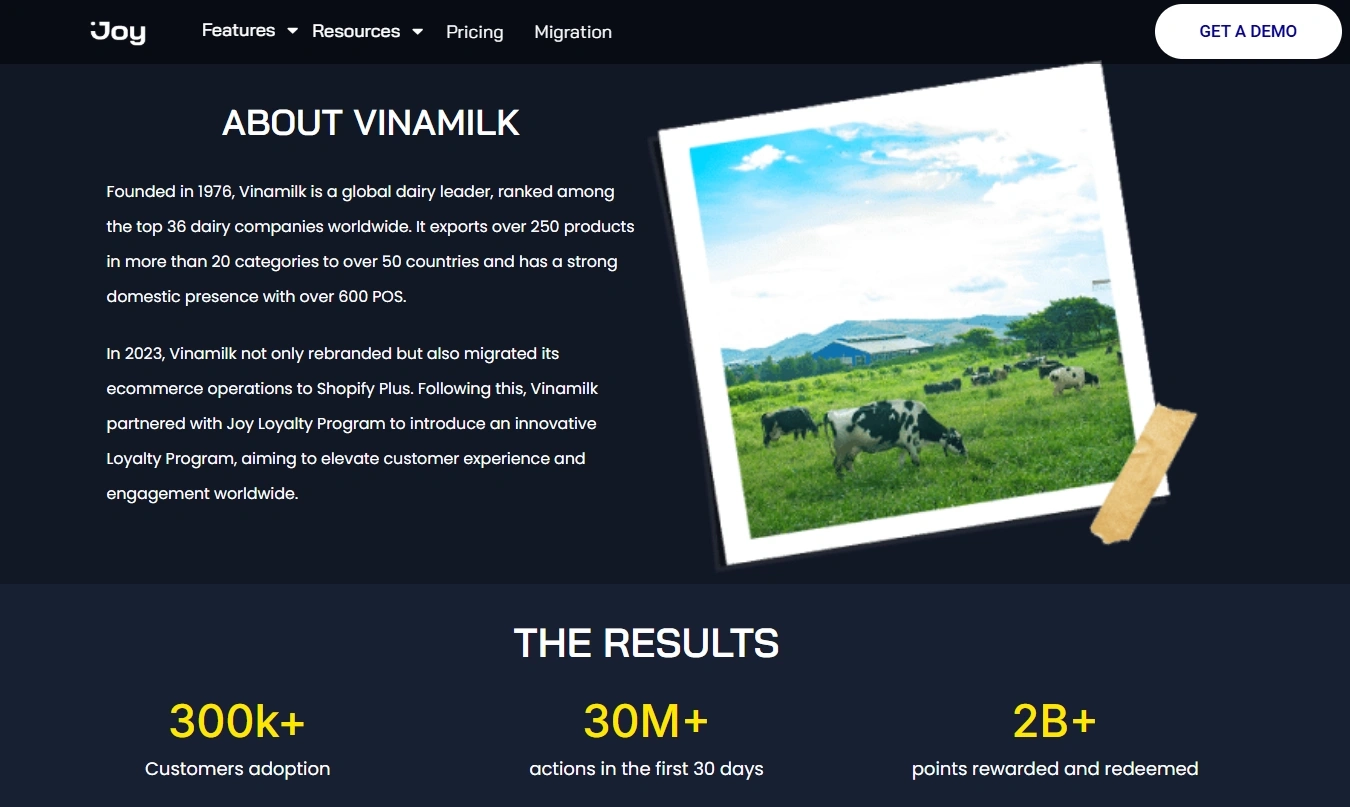
Challenges before implementation
- Fragmented Sales Ecosystem
Vinamilk faced challenges in providing a seamless customer experience across its vast and diverse sales network. With 624 retail outlets, an e-commerce platform, and over 3,000 third-party distributors and retailers, the fragmented ecosystem made it difficult to ensure consistency and track customer behavior.
- Limited Loyalty Program
The existing loyalty program was restricted to Vinamilk’s POS locations, excluding many customers who shopped through third-party channels or online. This limitation hindered the brand’s ability to engage and reward these customers, reducing the program’s overall effectiveness.
- Data Collection & Analysis Difficulties
Vinamilk also struggled with gathering and analyzing customer data from its various sales channels. This lack of cohesive data prevented the company from implementing targeted marketing campaigns and delivering personalized customer experiences.
Achievements After Implementation
- Partnership and launch
In late 2023, Vinamilk partnered with Joy to launch the Vinamilk Rewards program. This loyalty initiative addressed the brand’s challenges by providing a unified platform for engaging customers across all touchpoints.
- Omnichannel Integration
The program seamlessly integrated with Vinamilk’s website, mobile app, and over 600 POS locations. Additionally, a “point collection card” was introduced for third-party retail channels, allowing customers to earn and redeem points regardless of where they made purchases.
- Diverse and Flexible Reward Opportunities
The program featured a variety of point-earning opportunities, such as milestone bonuses, rewards for social media interactions, and special occasion bonuses like birthdays. Customers could redeem points for vouchers or exclusive merchandise, catering to a wide range of preferences and needs.
Key Results
- The loyalty program delivered an impressive ROI of 450%.
- 50% of rewards were redeemed within 30 days, indicating strong customer participation.
- The program attracted over 1 million active users.
- Vinamilk achieved over 2 million USD in revenue in 2023, further solidifying its market leadership.
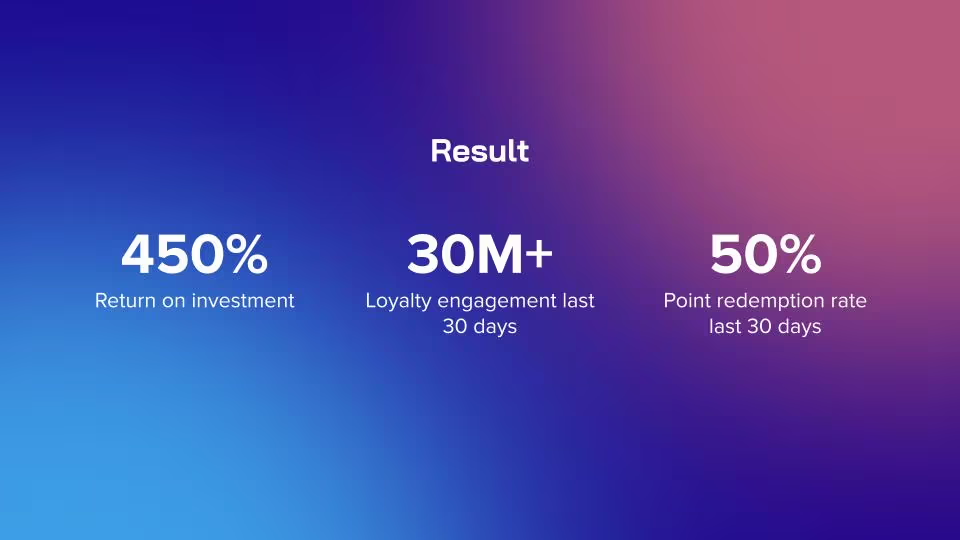
Key Takeaways
- Personalization is key to engaging customers.
- A mobile-first loyalty program can drive high levels of interaction.
- Use data-driven insights to continuously improve your loyalty offers.
Starbucks Rewards
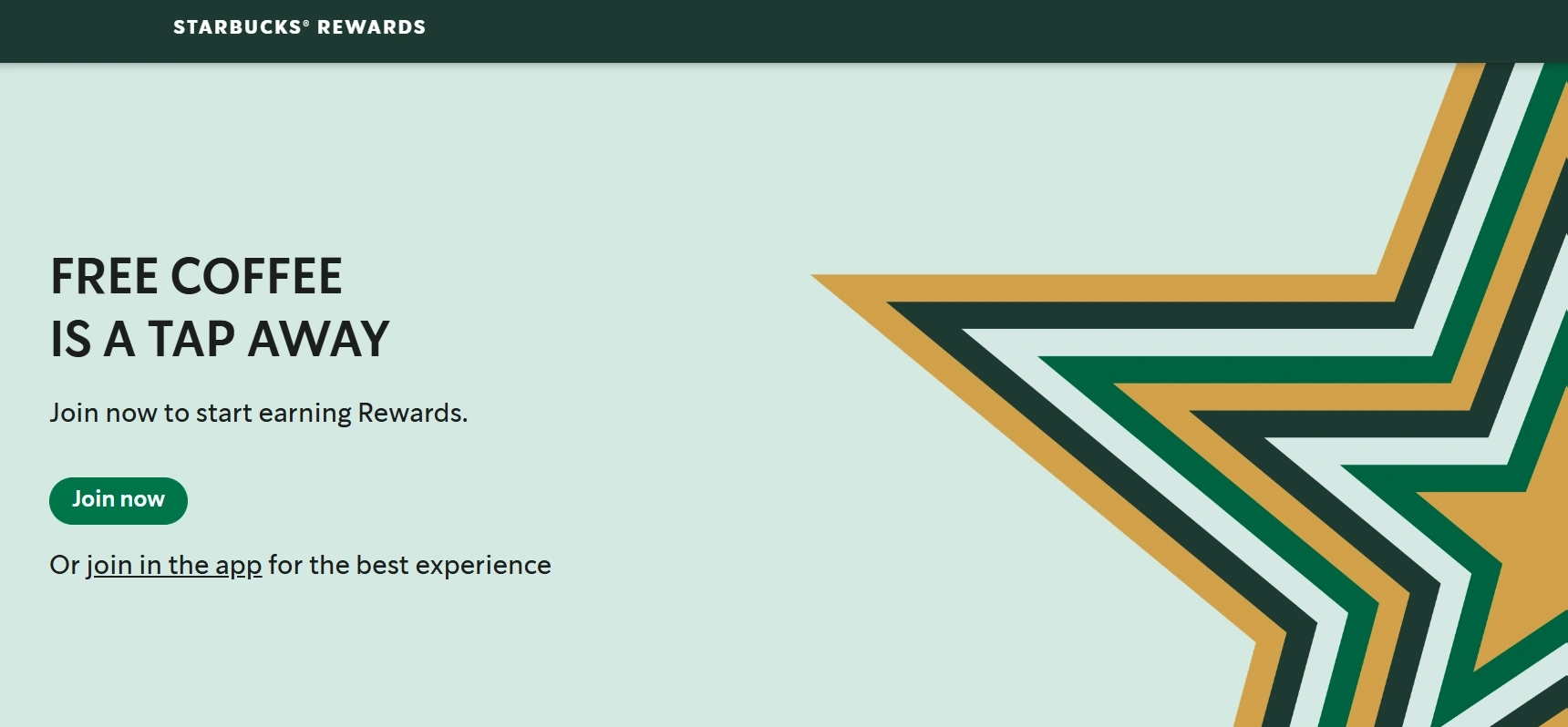
Challenges Before Implementation:
- Inconsistent Customer Retention: Starbucks saw a high level of one-time customers but struggled with retaining them for repeat business.
- Competing in a Crowded Market: With so many coffee shops available, it was difficult to differentiate Starbucks from competitors.
Achievements After Implementation:
Starbucks launched the Starbucks Rewards program, offering customers points (stars) for purchases that could be redeemed for free drinks and food. They also integrated the program into their mobile app, making it easy for customers to earn and redeem stars.
Key Results:
- Massive Growth: Over 19 million active members in the U.S. alone, with more joining globally.
- Increased Sales: Customers who used the loyalty program spent more and visited more often.
- Enhanced Customer Experience: The app made it easy to track rewards, leading to a seamless experience that encouraged repeat visits.
Key Takeaways:
- Combining mobile convenience with rewards can drive substantial growth.
- Clear and appealing incentives can increase repeat business.
- A strong loyalty program can transform customers into brand advocates.
Amazon Prime

Challenges Before Implementation:
- Customer Retention: Amazon was facing challenges retaining customers for its vast product offerings and needed to create an incentive for them to stay loyal.
- Customer Acquisition Costs: Acquiring new customers was costly, and Amazon needed a solution to make customer acquisition more sustainable.
Achievements After Implementation:
Amazon introduced Prime, a paid subscription loyalty program offering free shipping, streaming services, exclusive deals, and more. The key differentiator was its value-packed benefits, which incentivized repeat purchases.
Key Results:
- Skyrocketing Memberships: Over 200 million members worldwide, with a significant increase in paid subscribers.
- Increased Purchase Frequency: Prime members are more likely to make frequent purchases, resulting in a higher lifetime value.
- Brand Loyalty: Amazon Prime has become a critical driver of customer loyalty, with subscribers often seeing more value than they spend.
Key Takeaways:
- A subscription-based loyalty program can generate steady, recurring revenue.
- Offering a wide range of benefits can make a program more attractive.
- Integrating a loyalty program with core services (like shipping) boosts customer retention.
How to Choose the Right Loyalty Program for Your Business
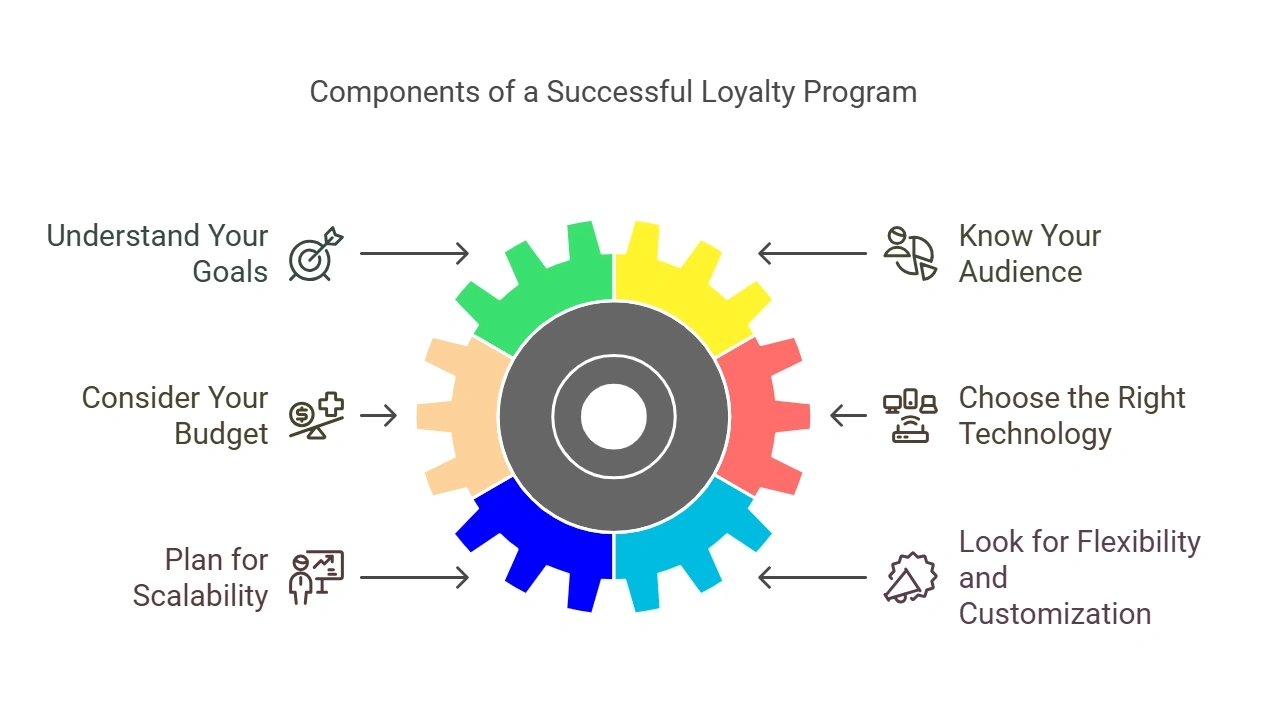
Choosing the right loyalty program can make or break your customer engagement strategy. Here’s a simple guide to help you pick the best fit:
- Understand Your Customers: Group and analyze your target audience’s preferences, shopping habits, and what motivates them to engage with your brand. Tailor the program to meet their expectations.
- Define Your Goals: Determine what you want to achieve with the loyalty program, such as increasing customer retention, driving repeat purchases, or improving customer engagement.
- Choose the Right Format: Select a program type that suits your business model and customer base, such as points-based systems, tiered memberships, cashback rewards, or gamified experiences.
- Ensure Scalability: Plan for a program that can grow with your business and adapt to future changes in customer preferences and market trends.
- Incorporate Personalization: Opt for a program that allows you to tailor rewards and experiences to individual customers, enhancing their sense of value and connection to your brand.
- Leverage Technology: Use reliable software or platforms to manage and track the program efficiently, ensuring seamless customer experiences and accurate reward distribution.
Common Pitfalls and How to Avoid Them
Avoiding common mistakes can help you run a successful loyalty program. Here’s what to watch out for:
- Overcomplicating the Program: Keep it simple. If customers can’t easily understand how to earn and redeem rewards, they might lose interest.
- Ignoring Customer Feedback: Always listen to what your customers have to say. Regular feedback ensures you’re offering the right rewards and keeping them engaged.
- Lack of Personalization: Generic rewards won’t keep customers loyal. Personalize your offers to make them feel valued and unique.
- Not Promoting the Program: Don’t assume customers will automatically know about your program. Use email, social media, and in-store promotions to spread the word.
- Setting Unrealistic Expectations: Avoid making rewards too hard to achieve. Striking the right balance is key to keeping customers motivated.
- Neglecting Program Maintenance: A loyalty program is not a “set it and forget it” project. Regularly update rewards, add new features, and keep it fresh to maintain customer interest.
Bottom Line
A well-designed loyalty program is a powerful tool for boosting customer retention, increasing revenue, and building lasting relationships. Whether it’s a points-based system, tiered rewards, or a custom loyalty program, the key is to offer personalized rewards that resonate with your customers.
What is a Loyalty Program: FAQs
What is the meaning of a loyalty program?
A loyalty program is a marketing strategy to encourage customers to continue buying from a business. It rewards customers for their repeat business through points, discounts, and exclusive perks. Essentially, it’s a way to say “Thank You” to loyal customers and incentivize them to stick around.
What is the best example of a loyalty program?
One of the most well-known and successful loyalty programs is Starbucks Rewards. Members earn “Stars” for every dollar spent, which can be redeemed for free drinks, food items, or merchandise.
Additionally, its tiered structure encourages repeat purchases to unlock higher rewards, while the mobile app provides a convenient platform for managing points, placing orders, and making payments.
Is a loyalty program a CRM?
No, a loyalty program and a CRM (Customer Relationship Management) system are closely related but serve different purposes. A loyalty program is a specific marketing strategy designed to reward and retain customers by offering incentives such as discounts, points, or exclusive perks based on their interactions and purchases.
In contrast, a CRM system is a broader tool that helps businesses manage customer relationships, including data collection, communication, and analysis.
Why are loyalty programs important?
Loyalty programs are key to building long-term relationships with customers. They help reduce churn, increase lifetime value, and make customers feel valued. By offering personalized rewards and exclusive perks, you’re not just keeping customers around—you’re turning them into brand advocates who’ll keep coming back for more.


